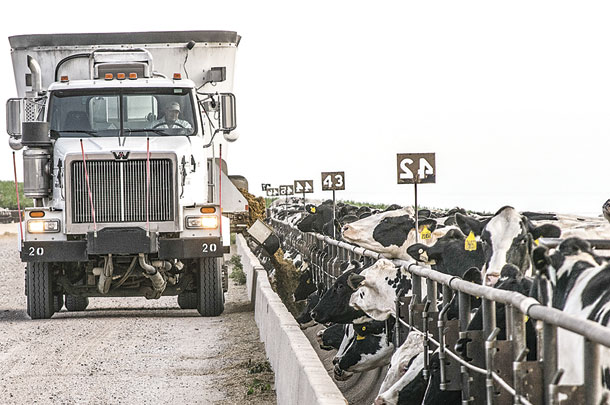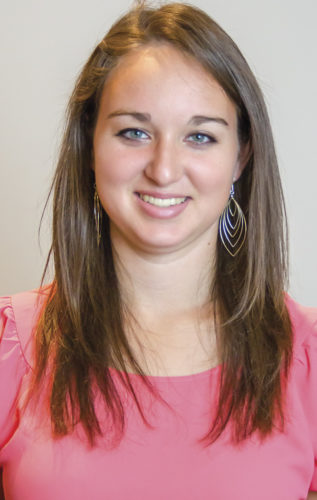In October 2016, the Dairy Calf and Heifer Association (DCHA) introduced its revised Gold Standards, setting a new industry standard producers could use to measure their own operations.
For DCHA members Jim Leick and T.J. McClure, the standards offer guidelines and goals they can use to step up their heifer-raising programs.
Jim Leick
Night Hawk Dairy
Stratford, Wisconsin
Leick first heard about the Gold Standards 10 years ago at DCHA’s annual conference when he co-owned a 200-cow dairy with his brother. At the time, the standards helped him see where their heifer program needed to improve.
“The Gold Standards gave me goals to try to meet,” Leick says. “I had areas I was struggling in, so it was a good resource for goals, something to strive for.”
However, in 2013, his brother decided to retire from dairy farming, so Leick joined forces with his second cousins Steve and Chris, who owned a 200-cow dairy across the road. Together, they expanded the dairy to 950 milk cows. Today, Leick manages the dairy’s calf and heifer program and mainly uses the new standards as a resource for training, record-keeping and protocol development.
“It helped me and my team,” Leick says. “Instead of just telling them, ‘This is the way I want it done,’ I can show them the actual Gold Standards and explain this is an industry standard we’re trying to achieve or if we’ve achieved it, and this is why we do it this way.”
Even in areas where the farm meets or exceeds the goals set forth in the standards, Leick says reminding himself and his employees of the standards encourages them to keep pushing to provide the best care possible for their animals.
One example of this is weight gain. Per the Gold Standards, calves should double their birthweight by 56 days old. Leick’s calf program enables his calves to do this by 45 days old. Leick recognizes he can’t accomplish this without quality calves in the calf barn, so he and his cousins work together to ensure they provide quality care in all aspects of cattle management.
“There’s no beginning or end,” Leick says. “The calves aren’t more important than the cows or the dry cows. We try to have a good team approach where everybody needs to work together. The weakest link in a chain is where it’s going to break, so that’s kind of the way it is with cows and calves. If you don’t have a healthy cow, you’re not going to have a very good start to that calf, and you have to have a good calf to have a nice, healthy cow.”
For Leick, his role on the team starts with the newborn calves. After birth, heifer calves are towel-dried and immediately put in an individual pen in the nursery area of the calf barn. Here, calves receives their first gallon of colostrum within an hour of birth.
Since colostrum quality can vary by season, Leick instructs his employees to feed heifer calves whatever is the highest-quality colostrum in the freezer at the time. All of this first-feeding colostrum is pasteurized and stored in 1-gallon bags for easy thawing and feeding.
After feeding, the employee milks the calf’s dam and freezes 1 gallon of it for future use. If there is enough, they save an additional gallon for the calf’s second colostrum feeding 12 hours after birth. Leick tests calves for protein 72 hours after birth to check for adequate passive transfer. In general, calves score between 6.3 and 6.5; however, he says if a calf misses the second feeding of colostrum, it typically scores a 5.3 to 5.5.
Along those same lines, calves receive 1 gallon of transition milk twice a day until they are 5 or 6 days old. After that, they receive milk replacer. When they are a week old, Leick moves them to one of four group pens in the calf barn, where they transition to an auto-feeder.
Once on the auto-feeder, calves can drink 2.5 liters of 27:20 milk replacer every two hours in the winter. In the summer, they switch to a 28:10 milk replacer. Leick says calves average 12 liters per day and have a 2-pound average daily gain. The calf pens are set up to be an all-in, all-out system to minimize disease spread between groups. Each pen holds 18 calves, and it takes two weeks to fill them.
Since the dairy is no longer growing, Leick only needs to raise 25 replacement heifers a month, although he typically raises 30 to give himself some wiggle room. To help him narrow it down to the top 25 calves, Leick genomic tests every calf at 2 to 3 weeks old and keeps detailed treatment records.
Calves that receive three treatments or more are flagged as possible culls, especially if they are one of the lower-genomic net merit heifers in that group. At 6 months, when they move to the heifer barn, he evaluates them to see how they’re growing and decides to cull them or keep them at that point.
In general, Leick says he prefers to go by weights with calves rather than age alone. For this reason, he weighs heifers every three weeks. For example, calves average 85 pounds at birth, but he does see calves as small as 70 pounds. If a small calf is born when a calf pen is almost full, he holds the calf back and puts it in the next group so it is one of the older calves in the group instead of one of the youngest.
Heifers typically calve in between 21 and 22 months. While the heifers are ready to be bred by 11 months, Leick says they wait to breed them until 12 months to give them an extra month of growth. As a result, they have very few calving issues. In addition, at eight weeks in milk, first-lactation heifers average 89 pounds of milk per day, while second-lactation- and-older cows average 123 pounds of milk per day.
Although Leick has achieved the goals he originally set after reading the Gold Standards, they have inspired him to set new goals. His next one is to raise the age of their milking herd so he only needs to raise 20 replacement heifers every month instead of 25 or 30.
T.J. McClure
Circle Heifer Development
Garden City, Kansas
McClure first joined DCHA in 2011 and began attending the association’s annual conference where he learned about the Gold Standards. McClure is the managing partner of the 11,000-head heifer-raising operation which he co-owns with his stepfather, Wes Whitaker, Marc Gigot and the Dean Gigot Estate.
The operation raises heifers from 6 months old to seven months pregnant for several dairies in the Upper Midwest. McClure says this is where the standards come in handy because they are industry-recognized, scientific standards he and his clients can agree upon and use to guide their conversations and contracts.

“With what we were doing, it was hard to gauge things like: What is an appropriate death loss? What would be appropriate height of heifers at breeding? What are the numbers and the conception rates we should be shooting for?” McClure says. “More than anything, it’s been helpful if an issue comes up. We refer to the Gold Standards to see if we’re in the ballpark of what the goal should be. It’s a good benchmark to look at with customers.”
In addition, McClure says the transportation standards has been particularly helpful for them. They use it like a checklist, and it guides many of their protocols on things like managing and loading trailers.
Once calves arrive at their facility, they’re weighed and then quarantined for the first week so they can monitor them for any signs of sickness. McClure tracks the health of each load of calves that comes in to know what he’s starting with and pays particularly close attention to the death loss/survival rate from each farm. During this time, he likes to see a 99 percent survival rate.
After quarantine, calves move to one of the operation’s drylot pens where they will be housed in groups of 100. If the heifers are from a smaller farm, and there aren’t enough to fill an entire pen, the heifers will be commingled with other farms at this time.
Between 6 months and a year, McClure says he likes to push them a bit and achieve a 2 to 2.1 average daily gain to set them up well for breeding at 375 to 400 days old or 850 to 900 pounds. To encourage this weight gain, the farm feeds a ration of triticale silage, sorghum silage, alfalfa hay, distillers grain and minerals. Once heifers are bred, he and their nutritionist adjust the ration so heifers have a 1.6 to 1.7 average daily gain.
The breeding pen is one area where McClure says the Gold Standards are particularly helpful, as they tell him what numbers he needs to maintain or surpass to be at or above industry standard. When heifers enter the breeding pen, they receive a prostaglandin shot.
McClure says about 65 percent of heifers will come into heat after that. Two weeks later, they give heifers a second prostaglandin shot, a week after they are given CIDR and a timed A.I. They then pregnancy check the heifers 42 to 48 days after their last heat.
McClure’s goal is to have a 98.5 percent overall survival rate and to send home about 93 to 94 percent of the heifers he receives. This accounts for death loss and allows him to cull freemartins, poor performers, heifers that aren’t pregnant after they leave the breeding pen and heifers that slip calves during pregnancy.
McClure says while he has hit most of the goals outlined in the Gold Standards, they are now helping him change his mindset to focus on the positives instead of the negatives. For example, instead of tracking their death loss, he now tracks survival rate. It gives him the same information, but it encourages him to focus on the animals alive in his pens or on his clients’ dairies instead of the heifers they lost. ![]()
PHOTO 1: At Night Hawk Dairy, Jim Leick starts weaning calves at 6 weeks old. Milk feedings are still the same size but spaced further apart every few days until the calf is completely off of milk at 8 weeks old. Once calves are 3 months old, they switch from a 20 percent pelleted starter to hay and an 18 percent grower.
PHOTO 2: McClure feeds their heifers a TMR of triticale silage, sorghum silage, alfalfa hay, distillers grain and mineral. The forages are all grown on the operations, and the distillers grain is from a local brewery. Courtesy photos.

-
Jenna Hurty-Person
- Field Editor
- Progressive Dairyman
- Email Jenna Hurty-Person






